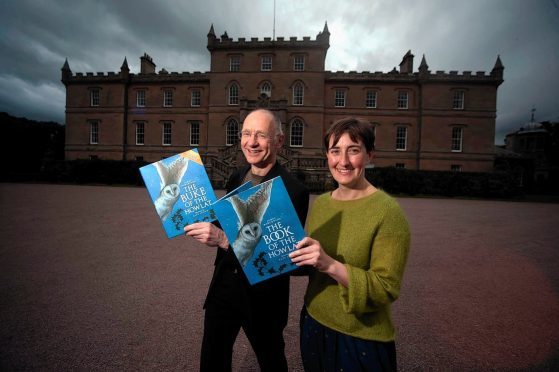A historic Scottish fairy tale has been revived at the Moray castle where it was first brought to life in the 15th century.
The Book of the Howlat, which tells of a young owl’s attempts to improve his appearance, was originally written by cleric Richard Holland and published in the 1440s.
He was chaplain to the Earl of Moray at that time, and gave the fable its first public reading in Randolph Hall at Darnaway Castle, outside Forres.
It reappeared on bookshelves across the nation yesterday and its return to prominence was celebrated at the ancient venue last night.
Retired Elgin businessman Jim Royan played a large part in rejuvenating the time-honoured tale, after coming across a reprinted version of the original two years ago.
He became determined to make it available to a larger audience, and secured the services of Lossiemouth artist Kate Leiper to illustrate a new version.
And Fife-based author James Robertson agreed to rewrite the story to ensure that children today could appreciate its message.
It has been re-imagined for a modern audience in both English and in traditional Scots tongue.
Publishers Birlinn Ltd said the book was one of the first to be published in Scotland.
Managing director, Hugh Andrew, said: “The Book of the Howlat is not simply a beautiful story, but one of great historical importance.
“It is a privilege to republish it and to be able to launch it where it was first heard in 1448 – in the Randolph Hall of Darnaway Castle.”
Original author Mr Holland was from Orkney, and was chaplain to Archibald Douglas when he penned the moving tale.
While the new version has been reworked as a children’s story, it was intended as a political satire for its 15th century audience.
The howlat of the title believes himself to be ugly and seeks to speak with a peacock – believing the finely feathered creature to be the most handsome of all birds.
He asks the peacock if nature can change him, and a council of birds is summoned to discuss the young owl’s fate.
